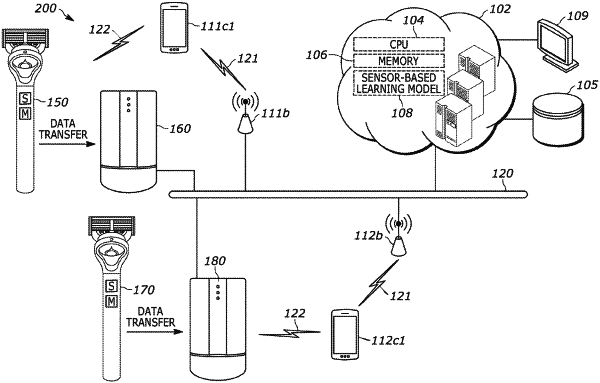| CPC B26B 19/388 (2013.01) | 35 Claims |

|
1. A sensor-based shaving method of analyzing a user's shave event for determining a unique threshold value of the user, the sensor-based shaving method comprising the steps of:
a. providing a grooming device to a user, the grooming device comprising:
i. a handle comprising a connecting structure, and
ii. a hair cutting implement, the hair cutting implement being connected to the connecting structure;
b. providing a shave event sensor to the user, the shave event sensor coupled to the grooming device configured to measure a user behavior associated with a shave event;
c. providing a communication device communicatively coupled to the grooming device configured to communicate the measured user behavior associated with a shave event;
d. providing a processor communicatively coupled to the shave event sensor and/or communication device configured to complete the steps of:
i. collect a first dataset from the shave event sensor, the first dataset comprising shave data defining the shave event;
ii. analyze the first dataset to determine baseline behavior data of the user;
iii. analyze the baseline behavior data to determine a unique threshold value of the user that is different from the baseline behavior data;
iv. compare one or more subsequent datasets, each comprising shave data of one or more corresponding shave events, to the unique threshold value of the user to determine comparison data, and;
e. providing, based on the comparison data, an indication via the grooming device to indicate a deviation from the threshold value and to influence the user behavior.
|